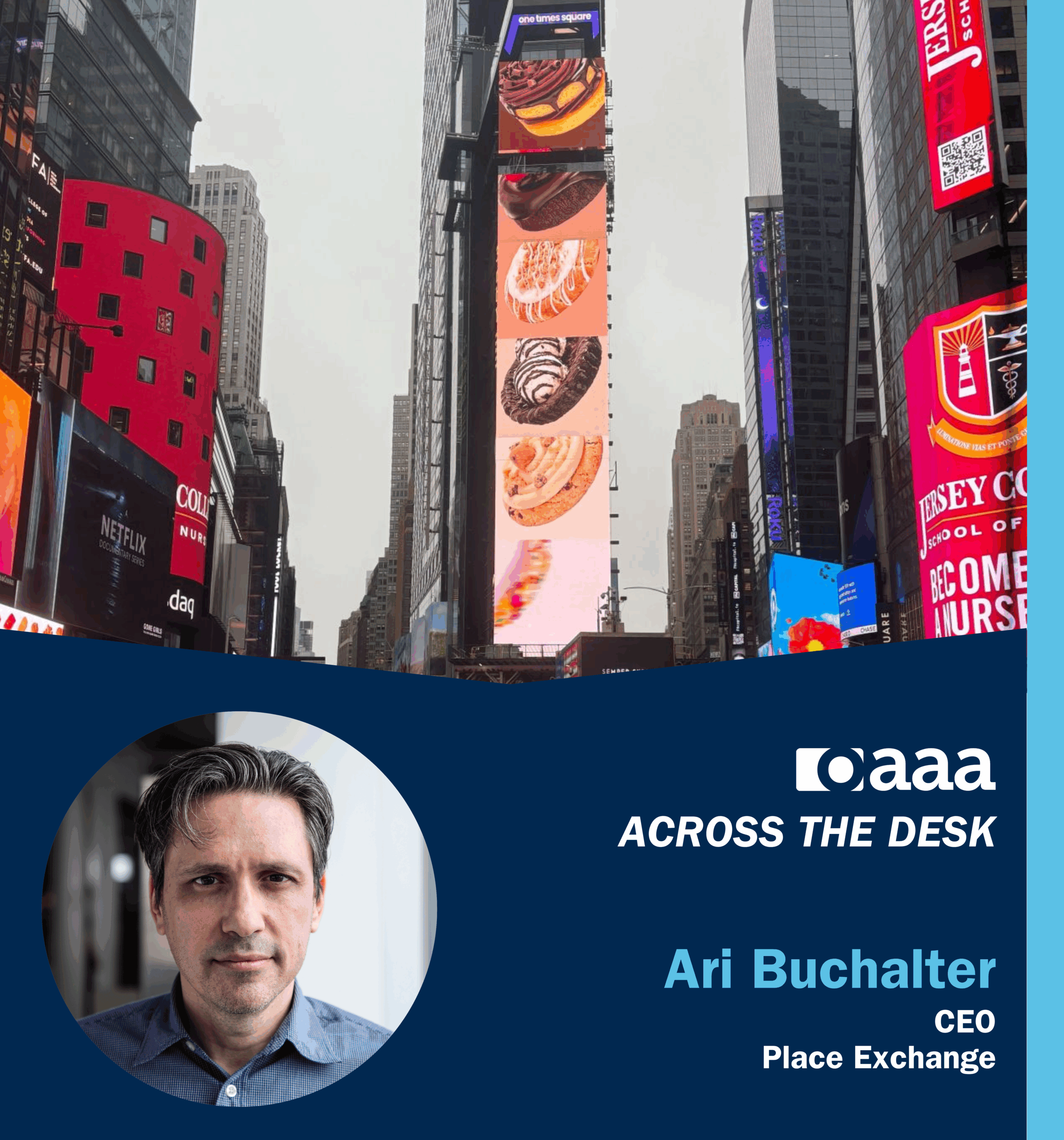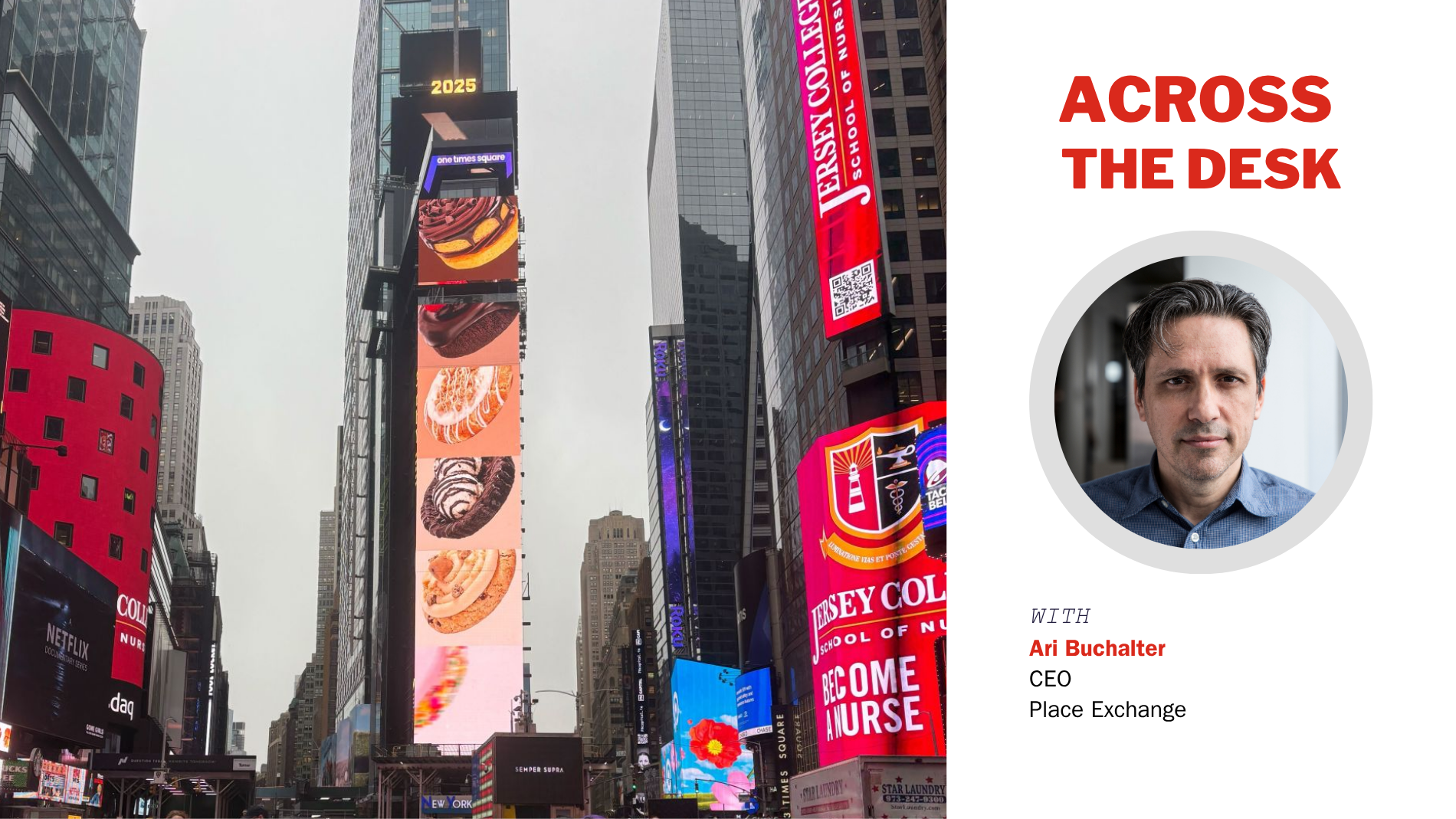
Every month, OAAA’s editorial team sits down with an industry leader to discuss the latest insights, trends, and best practices for the OOH industry. This month, we sat down with Place Exchange‘s CEO Ari Buchalter, who discussed what excites him about OOH right now, his message for brands that haven’t bought OOH before, and what’s next for the industry.
Read Ari’s Q&A in The Drum.
What excites you about OOH right now?
Its moment has arrived. That was made clear to us at the recent Cannes Lions festival. In the past, we would spend a lot of time educating large media companies, tech platforms, and brands – the kind that take over entire beaches and hotels in Cannes – about the innovations in OOH (and especially DOOH) and why it needs to be top of mind, but it was mostly “push”. This past summer it flipped to “pull”. Those same companies have come to the realization that DOOH needs to be a strategic priority and they are actively looking for solutions. Omnichannel DSPs are leaning in like never before, including many that are new to DOOH. Digital native agencies – large, medium, and small – are ramping up their DOOH spending via programmatic. In-house programmatic teams at large brands are bringing DOOH under their purview for the first time. And all of the above is happening globally.
What message do you have for brands that haven’t bought OOH before?
Those of us in the OOH industry already know this, but we need to make everyone else aware of it: virtually anything that you can do in any other digital channel (online, mobile, etc.), you can do with DOOH. Target custom 1st party or 3rd party audiences, run dynamic creative executions based on real-time triggers, measure deterministic outcomes from branding to conversion including incrementality, you name it. We’re talking Annie Get Your Gun vibes, or at least the digital advertising version. Pretty much the only thing you can do in other digital channels that you can’t do with DOOH is waste large amounts of money on bot fraud, non-viewable impressions, or inappropriate content.
What’s the next big thing for OOH?
We are seeing two seismic trends in the industry right now. The first is the growth of Programmatic Guaranteed (PG), which allows buyers to combine the predictability and control of direct buying with the efficiency and power of programmatic, and allows sellers to open up their inventory to a much broader pool of demand with complete transparency and control. In our recently-released Programmatic Trends Report, PG represented 5% of all spend on our platform in H1 2025, which may seem small, but it’s quintupled from only 1% a year ago, and is already closer to 10% today.
The second trend has to do with DOOH having close ties to the two largest and fastest-growing parts of the digital advertising ecosystem: CTV and Retail Media. Many DOOH displays are in fact connected TVs that just happen not to be in the living room, but they represent a large portion of premium video content consumption, especially when it comes to live sports and events. And many DOOH displays happen to be at or near retail locations, where over 80% of purchases still occur. Those adjacencies are capturing the interest of brands and platforms who understand that DOOH fills critical gaps for CTV and Retail, and that in turn is driving innovation that we believe will ultimately reshape the flow of ad spend in a meaningful way.
How is programmatic transforming the way brands think about buying and measuring OOH?
When it comes to non-programmatic buying, the effort is linear. What I mean by that is if you want to run a media plan that spans 10 different media owners, that essentially entails 10 times the work it takes for one media owner (getting avails, creating a plan, negotiating pricing, setting up the buy, approving creatives, getting reporting, billing, troubleshooting, etc.). With programmatic, all of those steps are not only easier, faster and more automated, but doing it all across multiple media owners entails virtually no extra time or effort. Those benefits become especially apparent when overlaying advanced capabilities like dynamic creative, measurement studies, MAID passback, etc., which are particularly challenging to implement manually across many publishers. Programmatic seamlessly enables all of those capabilities, and more, at scale across the entire buy.
Moreover, programmatic offers flexibility that simply doesn’t exist with direct buying (e.g., launching/pausing, scaling up/down, redistributing spend, or swapping out creatives – all in real time) as well as granularity of targeting (by audience, location, daypart, venue type, etc.) at a level that often is not available through direct buys. And programmatic does all of that inside the same omnichannel DSPs that buyers use to run the other 97% of their media, unifying workflow, reporting and measurement for DOOH with other digital channels. The fact that programmatic brings DOOH into the omnichannel fold is not just a huge benefit for buyers – it also makes it fluid and easy to move budgets over from other channels in a way that doesn’t exist when OOH is bought in isolation, and that can give rise to the thing media owners love most: net new revenue.
Published: August 11, 2025
